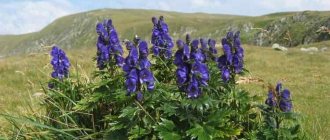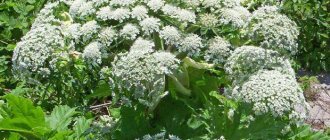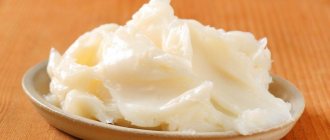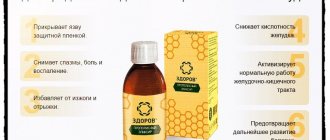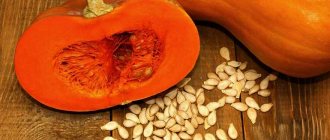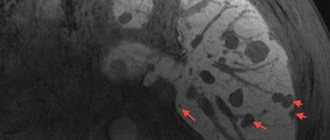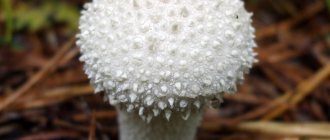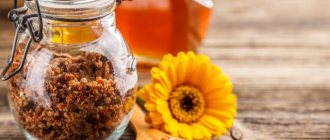For what forms of cancer is it recommended to use
In homeopathy, fighter tincture is used for various types of cancer, including those with metastases. Aconitine is able to penetrate deeply into tissues and negatively affect tumor cells. It is also indicated for benign neoplasms.
In order for the tincture to be beneficial, it is important to prepare it correctly and choose the optimal dose. However, in homeopathy this remedy is widely used in the comprehensive fight against cancer.
If you decide to use Djungarian aconite in the treatment of cancer, an experienced homeopath or herbalist can tell you how to take it. This plant is not currently used in official medicine.
Aconite is classified as a poisonous plant. It contains alkaloids - aconitines, which in a lethal dose can cause respiratory arrest. Back in Ancient Tibet, it began to be used for medicinal purposes, including for the treatment of cancer.
Aconitines can easily penetrate the skin! No need to prepare the product yourself. You can buy tincture of Djungarian aconite in homeopathic shops or order it online. The last method is more risky, since there is no guarantee that they will send you a quality drug and not a fake.
Very aggressive substances are always used to treat cancer. They have many side effects. Alcohol tincture of Djungarian aconite can negatively affect cancer cells, but it also has the same effect on healthy tissue.
The effects of drugs that are officially approved to fight cancer can be monitored. They act selectively. Using aconite tincture is quite risky. To achieve a lasting therapeutic effect, you will need to increase the dose step by step.
Tincture of Djungarian aconite is used in homeopathy to treat a number of diseases, including the fight against cancer. At the same time, homeopaths emphasize that it is necessary to achieve a concentration of the drug in the blood that would reach the maximum permissible threshold. It varies from patient to patient
Therefore, the dosage must be selected very carefully. If you decide to take Djungarian aconite to treat cancer, you should start with microscopic doses
Djungarian aconite, whose treatment is not approved by WHO, is not included in traditional cancer treatment regimens. It is not used at all in official medicine.
In Bulgaria, China, and India, aconite tincture is officially approved for use. In the USSR, the drug was also used for complex cancer treatment.
History of the use of aconite in medicine
In the mid-19th century, the first mentions of the use of aconite for the treatment of cancer appeared (Lancet magazine, England).
At the same time, homeopathic doses were selected. In the 20th century, tincture of aconite was used by oncologists in a number of countries. Aconite tincture is traditionally used in folk medicine and homeopathy to fight cancer. It is considered both as an auxiliary means and as a main one. There are references to the positive results of using aconite extract in the complex therapy of melanoma and other oncological lesions of the mucous membranes and skin.
Since aconite is very poisonous, only microdoses of its tincture can be taken orally. The treatment regimen is selected individually by the homeopath. It is important to constantly monitor the body’s reaction and well-being. If the body has a pronounced negative reaction, the drug is immediately discontinued.
Interesting facts:
- Solzhenitsyn mentions that aconite was successfully used to treat cancer (“Cancer Corps”). He writes that it was the Issyk-Kul root (monkshood) that saved him from cancer.
- Along with aconite, hemlock is used to treat cancer. A pattern has been noticed - hemlock can support in the fight against cancer of the intestines and genitourinary organs, and the fighter can help with cancer of all organs located above the waist. At the same time, aconite is considered the most poisonous and dangerous. He will not cope with cancer on his own, but it is possible that he will play a role in complex treatment.
- In oncology, aconite is advisable to use to reduce pain and heal damaged tissues, as well as to slow tumor growth and fight metastases.
The effect of aconite on the human body
In terms of its effect on the human nervous system, aconitine is similar to the poison curare. That is why, when a dangerous dose of this alkaloid enters the body, death occurs as a result of paralysis of the respiratory center. Only tiny doses of aconitine are used for therapeutic purposes, and the therapeutic effect occurs only after the gradual accumulation of the alkaloid in the blood.
A tiny amount of aconitine normalizes heart rate and breathing, activates cellular metabolism, prevents the proliferation of infections and inhibits the growth of tumors. And in large quantities, this alkaloid leads to paralysis of the heart muscle, suffocation and death, so the main task of the homeopath is the correct choice of dosage.
Immediately after ingesting water with aconite tincture dissolved in it, a person experiences increased salivation. This is due to the fact that the poisonous alkaloid irritates the parasympathetic nerve when absorbed through the oral mucosa. Also, in the first hours after taking it, even a healthy person’s body temperature decreases slightly.
A pronounced therapeutic effect can only be achieved with regular intake of the alkaloid. The substance must accumulate in the body and provoke an immune response. Only then will the protective forces be activated and the person will begin to fight the disease. When treating, it is necessary to take into account that aconite decoction is twice as weak as an alcohol infusion.
Djungarian aconite is used in modern homeopathy to treat the following diseases:
- Anemia and loss of strength;
- Hormonal dysfunctions, infertility, impotence;
- Diabetes mellitus, toxic goiter;
- Deafness, cataracts, glaucoma, blindness;
- Benign neoplasms (fibroids, adenomas, fibromas, polyps and cysts);
- Gallstone and kidney stone disease;
- Arrhythmias, angina pectoris, hypertension;
- Ulcers, gastritis, cholecystitis, pancreatitis, constipation, diarrhea, flatulence;
- Bronchitis, pneumonia, asthma, tuberculosis, pleurisy;
- Trigeminal neuralgia, migraine, depression, insomnia, paralysis, Parkinson's disease;
- Psychosis, schizophrenia, epilepsy, seizures and tics;
- Rheumatoid arthritis, arthrosis, radiculitis, gout, osteochondrosis, bruises, dislocations, fractures;
- Venereal diseases, syphilis, anthrax;
- Psoriasis, erysipelas, vitiligo, eczema, neurodermatitis;
- As an external antiseptic – for pediculosis and scabies;
- As an antidote – for poisoning by poisonous plants and mushrooms;
- As an antitumor agent - in the treatment of any type of cancer.
Treatment with tincture of aconite
The alcohol tincture has the following medicinal properties:
- antimicrobial;
- antiseptic;
- immunostimulating;
- hemostatic;
- soothing;
- antispasmodic and neurotoxic (properties that help relieve pain of varying nature and intensity).
The fighter's tincture is most effective against cancer at different stages of disease development. The effectiveness of the product has been proven by research by doctors, including the famous researcher of the anti-cancer abilities of aconite - T.V. Zakaurtseva, who developed a method for treating cancer patients with the plant . A rich evidence base for the benefits of wrestler in oncology therapy is given in the lectures of herbalist Alefirov A.N.
In addition, the tincture can be used to treat the following diseases:
- Pathologies of the heart and blood vessels;
- Diseases of the gastrointestinal tract;
- Diabetes;
- Epilepsy;
- Syphilis;
- Psoriasis, eczema in chronic form;
- Kidney pathologies;
- Uterine fibroids;
- Tuberculosis;
- Vision problems;
- Sclerosis;
- Polyarthritis, radiculitis;
- Neuralgia;
- Cold;
- Sclerosis.
The remedy is often used to relieve toothache.
Contraindications for use
The plant is a strong toxin, so in no case should you violate the recommended dosage, exceeding which can cause poisoning. Symptoms of intoxication include:
- headaches, attacks of dizziness;
- suffocation;
- attacks of nausea and vomiting.
You should not use this potent drug in the following cases:
- Hypersensitivity to bioactive substances in the tincture or ethanol;
- The tincture is absolutely contraindicated for expectant mothers and women during breastfeeding;
- Persons with low blood pressure.
With great caution, you need to give the drug to children (in exceptional cases, only with the permission and under the supervision of a pediatrician).
Making your own tincture
If for some reason you cannot buy the drug at the pharmacy, try preparing it at home, strictly following the dosages.
Pour 20 grams of aconite root with 40 percent alcohol (200 milliliters). Let it brew for three weeks and strain. Take as recommended by your doctor. Never exceed the dosage!
We treat lung cancer
Another recipe for making tincture:
- Rinse 100 grams of root well under the tap and dry well;
- Place the roots in a liter jar and pour boiling water over them so as to completely cover them;
- After 60 minutes, cut the roots into small pieces and place them back in the jar of water;
- Top up with alcohol;
- Let it brew for three weeks in the dark.
After a while, strain and take orally three times a day. You need to start drinking one drop at a time, gradually increasing the dosage to 10 drops. Then gradually reduce the dose to one drop. The described tincture recipe will help with lung cancer.
We treat joints
The following remedy is prepared for the treatment of joint diseases.
Pour the root of the plant (100 grams) with vodka (liter) or alcohol. Place in a warm place for three days. Shake systematically. As soon as the product becomes dark, it can be used externally. Since the drug, when used externally, increases blood circulation, there is a load on the heart. Therefore, it is recommended to rub one leg one evening, and the other on the second. Rub the tincture dry. Then wrap the limb in flannel and wool fabric. In the morning, remove the bandage and after a couple of hours, wipe the limb with a cloth soaked in cold water. Duration of treatment is one month.
We treat cardiovascular diseases
Pour 10 grams of plant seeds with half a liter of vodka. Close container tightly and store in a cool, dark place. After two weeks, strain the tincture and take it according to the schedule.
Take 5 drops per day half an hour before meals. Drink clean water. Every day, increase the dosage by one drop until you reach 30 drops per day. Then you need to reduce the dosage by one drop every day.
For the treatment of arrhythmia or very high blood pressure, the tincture is prescribed to be taken orally three times a day.
How to treat cancer with aconite: methods and schemes
Herbal tincture
In the practice of treating oncological diseases, as a rule, a 10-percent alcoholic extract from the leaves or tubers of aconite is used. To do this, take red or turnip aconite. Due to the fact that these plant species have a fairly high toxicity, it is more correct to dose the drug with an insulin syringe (a regular one will not work, because in this case it will not be entirely accurate: you can either not add the medicine, which will negate all efforts, or overfill and poison a person).
The volume of the contents of this Spitz is one milliliter, which is 40 drops of a certain volume. It is also not worth using an eye dropper for dosing, because the volume of drops obtained from it is completely unstable, which can also lead, on the one hand, to an overdose of toxic substances (sometimes even doubled), and on the other hand, to a decrease in the effectiveness of the medicine .
As a rule, a tincture of this herb should be taken on an empty stomach, 30 minutes before meals or two to three hours after the next meal. The classic treatment regimen with aconite is designed for a gradual increase in the daily dose. At the very beginning, you need to drink one drop three times a day. Then every day increase the number of drops taken by one at each dose. On the twentieth day, the dose will be maximum - 60 drops per day. Then the number of drops will need to be reduced - all in the same order as they were increased. That is, the usual treatment cycle with aconite lasts 39 days.
And yet, it is necessary to take into account that each organism tolerates the effects of poison absolutely individually. In addition, it is necessary to focus on the general condition of the patient and how his organs and systems work. Quite often, doctors try to adapt the standard treatment regimen to the characteristics of each patient and to the characteristics of the particular tincture that this particular patient will take.
You should also pay attention to the fact that before taking the medicine, it must be dissolved in 50-60 ml of boiled water, which has previously been cooled to room temperature. And this rule applies to any number of rules.
If the tincture was prepared from slightly poisonous aconite, which has a low content of alkaloids, then the dosage should not be in drops, but in milliliters.
How to prepare aconite tincture
The availability of raw materials and the simplicity of technology speak in favor of self-preparing medicine. In addition, if you make the tincture yourself, you will be absolutely sure of its quality and precisely aware of the concentration. A drug purchased from a private herbalist may turn out to be ineffective or, on the contrary, too potent.
Collection and procurement of raw materials
If you are not confident in your botanical knowledge, carefully read the photographs of aconite so as not to confuse it with lupine, for example. Or ask the locals if that plant you saw in the neighboring field is aconite. People are probably well aware of poisonous herbs growing in pastures.
In homeopathy, the stems, palmate leaves, pubescent shoots, flowers, seeds and rhizomes of aconite are used. If we are talking about Djungarian aconite, it is the tubers of the plant that are harvested. It is advisable to collect the green parts in May, before flowering, and the underground parts - in early autumn, immediately after withering and fruiting.
At the slightest damage, the flowers and leaves of aconite release poisonous juice, so collection must be done with gloves. Avoid contact of fingers with the mucous membrane of the eyes and mouth. You can dig up tubers without gloves, but at home, when processing raw materials, you will still have to protect your hands.
Tubers of Djungarian aconite reach 8 centimeters in length and 3 centimeters in width. They are black or dark brown in color, and look like a turnip root, from which branching shoots extend, usually in one direction. Every year, aconite seems to walk underground, and above each shoot of the root system a dried stalk is clearly visible, going vertically upward. The collected rhizomes must be thoroughly washed, grated and immediately sealed tightly in a glass jar with a screw-on lid, since the aconitine alkaloid is volatile.
Recipe No. 1 for the treatment of cardiovascular diseases
For 500 ml of good vodka you will need 10 grams of aconite flowers or seeds. Close the jar tightly and store the medicine in a cool, dark place for at least two weeks, shaking the contents occasionally. You need to take this tincture according to the classic “slide” scheme, starting with 5 drops per day and daily increasing the dosage by one drop to 30, and then gradually reducing it to 5 drops.
You need to drink the medicine on an empty stomach, in the morning, 30-40 minutes before meals, dissolving the tincture in a glass of clean water. For severe arrhythmia and arterial hypertension, some homeopaths prescribe this dosage to take not once, but three times a day.
Recipe No. 2 for external use
The preparation method is exactly the same, but for 500 ml of vodka take 50 g of grated Djungarian aconite root. The tincture turns out to be highly concentrated, and it is used only externally, to disinfect wounds, eliminate parasites (lice, scabies mites) and relieve pain in osteochondrosis, sprains, fractures, dislocations, radiculitis, and draft-chilled muscles.
Using this tincture, it is good to vigorously rub the back and joints, apply warm compresses for colds, if the patient does not have a fever.
Recipe No. 3 for treating cancer
To prepare a tincture for 1 course of cancer treatment, you need to take 100 ml of medical alcohol and 3 grams of grated aconite Djungarian root. Keep the medicine for three weeks in a tightly closed glass jar, in a shaded and cool place, and then strain.
You need to take the tincture according to the “slide” scheme, starting with one drop per day and gradually rising to 20, and then descending back to one drop. If during the process the patient feels unwell, nausea, or rapid heartbeat, then it is necessary to begin reducing the dosage by one drop daily, even if the course has not yet reached its peak.
Usually three full courses are prescribed with breaks of one month. In the third and fourth stages of cancer, a higher dose may be needed - up to 30 drops per day. In any case, an individual approach and consultation with an experienced homeopath are necessary.
Intensive method of taking aconite tincture for rapidly progressing oncology.
If the patient tolerated the first course according to the general scheme normally, without signs of weakness, nausea, or vomiting, then the next course of aconite tincture can be taken according to this scheme (intensive).
Take the tincture 3 times a day, reach 20 drops, then return to 1 drop. The course will be 40 days. Take a break of 2 weeks between courses. For effective treatment, conduct at least 2-3 courses in a row. For transient cancer, the break between courses can be reduced to 1 week.
| Reception day: | Number of drops per 50-100 ml of water, morning : | Number of drops per 50-100 ml of water, dinner : | Number of drops per 50-100 ml of water, evening : |
| 1 | 1 | 1 | 1 |
| 2 | 2 | 2 | 2 |
| 3 | 3 | 3 | 3 |
| 4 | 4 | 4 | 4 |
| 5 | 5 | 5 | 5 |
| 6 | 6 | 6 | 6 |
| 7 | 7 | 7 | 7 |
| 8 | 8 | 8 | 8 |
| 9 | 9 | 9 | 9 |
| 10 | 10 | 10 | 10 |
| 11 | 11 | 11 | 11 |
| 12 | 12 | 12 | 12 |
| 13 | 13 | 13 | 13 |
| 14 | 14 | 14 | 14 |
| 15 | 15 | 15 | 15 |
| 16 | 16 | 16 | 16 |
| 17 | 17 | 17 | 17 |
| 18 | 18 | 18 | 18 |
| 19 | 19 | 19 | 19 |
| 20 | 20 | 20 | 20 |
| 21 | 20 | 20 | 20 |
| 22 | 19 | 19 | 19 |
| 23 | 18 | 18 | 18 |
| 24 | 17 | 17 | 17 |
| 25 | 16 | 16 | 16 |
| 26 | 15 | 15 | 15 |
| 27 | 14 | 14 | 14 |
| 28 | 13 | 13 | 13 |
| 29 | 12 | 12 | 12 |
| 30 | 11 | 11 | 11 |
| 31 | 10 | 10 | 0 |
| 32 | 9 | 9 | 9 |
| 33 | 8 | 8 | 8 |
| 34 | 7 | 7 | 7 |
| 35 | 6 | 6 | 6 |
| 36 | 5 | 5 | 5 |
| 37 | 4 | 4 | 4 |
| 38 | 3 | 3 | 3 |
| 39 | 2 | 2 | 2 |
| 40 | 1 | 1 | 1 |
Chemical composition of aconite
The plant has a rich composition, including a set of organic acids and phytoncides, alkaloids and essential oils. This complex of substances has a powerful antibacterial and analgesic effect.
The foliage and roots of aconite are saturated with the following alkaloids:
- mesaanconitine;
- hetaanconitine;
- sasaakonitine;
- hypoanconitine;
- benzoylconine (but more aconitine).
In addition to them, ephedrine, napallin, and sparteine were found in the plant. The rhizome is rich in resinous substances, daucosterol, and includes starchy compounds and saponins. Various acids were found in the fighter: citric, benzoic, fumaric. There are also many fatty acids: stearic, linoleic, palmitic, as well as oleic and myristic.
Leaf blades accumulate tannins, inositol, flavonoids and a whole list of minerals:
- Macroelements include potassium and calcium compounds, iron salts, and magnesium.
- Microelements include copper, chromium, zinc and manganese compounds. Also present are barium, nickel salts, boron, and selenium.
The composition of the fighter also includes carbohydrates, coumarin, mesoinosidol. All of them are indispensable for the human body.
Compound
Tincture of Aconite Dzungarian consists of plant materials. The beneficial effect of the herbal remedy is due to the presence of certain chemicals in the plant tubers. The composition of plant raw materials includes the following substances:
- Alkaloids . The composition includes aconitine, acetylzongorin, acetylzongoramine, aconifine, acetylnapelin, zongoramine, isoboddin, zongorin, carocolin, neolin, napelin, phenyl-l-naphthylamine, norzongorin.
- Aconitine . Has an analgesic effect on the body. It is very important to follow the dosage. Large doses of tincture can be fatal due to respiratory arrest. For this reason, the tincture should be used with caution for medicinal purposes.
- Organic acids and coumarins.
Regardless of the specifics of introducing the tincture into the body, the chemical element Aconitine is dangerous in large doses and can lead to poisoning, which is manifested by itching, tingling in different places of the body, as well as disorientation, burning, pain in the alimentary canal, aching, and increased salivation. Symptoms of an overdose include dizziness, darkening of the eyes, pale skin, and arrhythmia.
Description of the plant
Djungarian aconite belongs to perennial herbaceous plants. Wrestler tall is the official name of the medicinal herb. It belongs to the Buttercup family. Depending on the region, people have come up with many other names for it:
- fighter;
- black potion;
- wolf root;
- buttercup blue;
- king potion.
The plant is distinguished by a densely leafy straight stem reaching a height of 1.8 meters. The grass has rounded, alternate leaves of a dark green color. Externally, the bush of the plant looks very attractive. The grass blooms with large, fancy flowers of purple shades. Species with yellow or white flowers are rare. The plant is unlike any other from the Ranunculaceae family. Outwardly, it is very similar to lupine from the legume family.
In total, there are more than 250 species of aconite growing in natural conditions. It mainly grows in the northern hemisphere:
- southern part of Siberia;
- Altai;
- North America;
- northern part of Central Asia.
In this area, aconite is well known to the local population. Despite its beautiful appearance, the plant is fraught with health hazards. All parts of it are poisonous, but the main part of the poison is concentrated in the tubers. Most of it is collected during the flowering of meadow grass. Toxic substances penetrate even through the pores of the skin, which is very dangerous for the circulatory system.
https://youtube.com/watch?v=3W57GhhcMwQ
Risks of use
If you use aconite tincture, it is important to remember the signs of poisoning by this plant:
- urge to vomit;
- the tongue, cheeks, lips, fingertips become numb;
- there is a feeling that goosebumps are running all over the body;
- thirst appears;
- temperature fluctuates;
- In case of severe poisoning, the muscles of the legs, arms, and face twitch, vision deteriorates, and breathing is difficult.
It is strictly forbidden to try even a tiny part of the aconite tuber! The root of Djungarian aconite is extremely poisonous. Even 1 gram can contain a lethal dose of aconitine.
As you can see, Djungarian aconite can only be used informally in the treatment of cancer
It is important to take into account the type of tumor, its size, location, presence of metastases, and dynamics of treatment. Of course, you can’t use just one tincture.
Treatment must be comprehensive. It is carefully selected by the oncologist. Ask your doctor if it is possible to supplement complex treatment with tincture of aconite.
Where can I buy
The online store “Russian Roots” offers tincture of Aconite Dzungarian on favorable terms from a well-known manufacturer with delivery to all regions of our country. In Moscow and surrounding areas, goods are delivered by courier service; to other regions of the country they are sent by mail. You can also purchase herbal tincture in the capital at one of the herbal pharmacies in the chain with the same name.
Attention! All materials published on our website are protected by copyright. When re-publishing, attribution and a link to the original source are required.
Precautions and first aid for poisoning
Since the drug aconite is very dangerous, all necessary precautions should be taken. Store only closed and away from children's hands and eyes.
After using the tincture, always wash your hands with soap and boil the cup you drank from. Do not change the treatment regimen or increase the recommended dose under any circumstances.
In case of overdose, the following symptoms are observed:
- Nausea;
- Vomit;
- Numbness of the limbs;
- Numbness of the tongue, cheeks and lips;
- Fever;
- Sudden loss of vision;
- Thirst and dry mouth;
- Strong headache;
- Low pressure;
- Loss of consciousness.
In such cases, emergency medical care must be provided immediately. Until the doctors arrive, it is urgent to rinse the stomach. You can do it yourself using a liter of warm water in which a couple of manganese crystals are diluted. You should quickly drink the liquid and induce vomiting, then take activated charcoal. Plenty of hot drinks in the form of strong tea and coffee are recommended.
From all of the above, we can summarize that many years of experience in using the plant proves its effectiveness in the fight against many ailments. However, the plant itself and medicines based on it are highly poisonous. Therefore, their use must be precise, following all instructions. To obtain a positive result, regular course therapy is needed; chaotic use will not give the desired result. It is ideal to use tincture, extract, or decoction of wrestler under the strict supervision of a doctor in order to control the dose and the body’s reaction to the active ingredients. But for now, unfortunately, this is impossible, since aconite is not recognized in official medicine as an effective means of fighting cancer. Therefore, the decision to start treatment with this drug rests solely with the patient. Before deciding on a course, you need to weigh the pros and cons, study the relevant literature, and identify possible risks.
When deciding on treatment with a fighter, you need to follow the exact dosage.
And, if possible, do not prepare the drug yourself; it is safer to buy it at the pharmacy.
Video addition:
Rules for treating cancer with aconite
With the correct dosage, there are almost no side effects, but the rate of disease development is reduced, pain and intoxication are reduced. To prevent poisoning, you need to take an insulin syringe, which will help you accurately measure the product drop by drop. The use of a pipette is strictly prohibited!
Different traditional healers prescribe different treatment regimens. They agree on one thing - you should drink the tincture 2 hours after eating, diluting it in 50-70 ml of cool water. The dose is increased gradually. Here is the order of therapy:
- start treatment with 1 drop/day;
- repeat the dose three times a day;
- add 1 drop daily, bringing to 10 per dose;
- Drink 30 drops/day for 10 days, then reduce the dose to 3 drops/day, as it was at the beginning, reducing one at a time;
- take a break for a month, during which time you can be treated with other herbs;
- It is advisable to produce 7 courses, if possible.
There is an alternative regimen in which the dose is increased to 60 drops/day, then reduced, and the therapy cycle will be 39 days. You need 3 courses of this therapy. Some homeopaths even suggest drinking 1 drop/day, but for a long time, for months. It is better to practice this method for benign tumors and be treated until recovery.
The name Djungarian aconite comes from the merger of two terms. According to legend, extremely poisonous grass grew in abundance in the vicinity of the Greek city of Akone. The semi-mythical plant akoniton gave the name to a real plant, used in ancient times to bait predators, wolves. Dzungarian is a modern prefix that characterizes the geographical region of Dzhungar Alatau, where industrial harvesting of the crop took place several decades ago.
Aconite often appears in the myths of Ancient Greece. In one of them, the appearance of the plant is associated with the hellish dog Cerberus, who spat poisonous saliva while Hercules dragged him from the underworld. And it was from this saliva that erect stems with deep purple flowers and an intoxicating smell emerged. Medea was going to poison Theseus with their juice, as the legendary poet Ovid spoke about in one of his works.
The second commonly accepted name of the culture, the grass fighter, first mentioned in Scandinavian myth, also has mythological roots. He talks about how the plant arose at the site of the death of the god Thor, who fought with a poisonous snake. The shape of the flowers of the plant reminded ancient storytellers of Thor's helmet.
The first mentions of the actual use of wolfsbane come from the history of Nepal. There is evidence that local residents used it in case of a military threat: they poisoned water bodies from which enemies could drink. The army of the ancient Roman commander Mark Antony was defeated by the smell of the plant. And the juice from the stems poisoned the famous Tatar prince Timur.
Dzungarian aconite: cancer treatment, how to take, indications for use
In oncology and homeopathy one can often find different uses of poisonous plants. The goal of such treatment is to reduce the rate of tumor growth or even destroy it. Recently, both on the Internet and among doctors, you can find an interesting poisonous plant, Aconite, which can help in the fight against cancer.
As many herbalists, as well as oncologists, advise, self-medication is contraindicated and all recipes, methods of application and the therapy itself are done under the strict supervision of an oncologist who is fully familiar with the patient’s medical history.
Otherwise, the patient risks harming himself even more and worsening the condition of the body. Let’s take a closer look at the treatment of cancer with the herb “Aconite Djungarian”, its medicinal properties and methods of use.
Description of the plant
In common people it is also called blue buttercup or tall fighter. This is a perennial plant with bright blue flowers. The toxic substance is contained one and a half times more than in the same hemlock, which is also used in the fight against oncology.
The plant has a distinctive horseradish smell due to the large amount of aconitine. This is a toxic substance and affects tumor cancer cells.
The poison permeates all components of the plant, but most of all it is in the rhizome. In Russia, Ukraine, and Belarus, this plant is not officially used in the fight against malignant tumors. It is more often used in Asian countries.
In China they call it “Aconite, a cure for any cancer.” In fact, this is quite controversial, since even there it is used only as an auxiliary type of therapy. But the basis is still: surgery, chemotherapy, radiation, etc.
Impact and effect
Tincture of Aconite has a direct effect on atypical cancer cells of the tumor. But it must be taken into account that the neoplasm itself releases waste products into the blood, which also poison the body and increase intoxication.
Tumor cells begin to grow more slowly, and aggression towards nearby tissues decreases when exposed to plant alkaloids. The cytostatic effect does not treat or destroy cancer cells, although there are slightly fewer of them. That is why the tincture can be excellent for preparing for surgery to reduce tumors.
Another question arises - can it be used during chemotherapy and how effective is it? Only the attending physician can answer this. Since he is the one who knows the dosage of chemical reagents. You need to understand that both chemistry and blue Buttercup are poison for the body. And the second can worsen the entire condition.
The plant also has an analgesic effect. This can help a lot, as in the first stages. So it is at the last stage, when the pain is already unbearable.
From the practice of Asian healers, you can find out that tinctures can really have a good effect at stage 1.
It is often mentioned that poorly differentiated and undifferentiated forms of cancer are sensitive to Aconite due to their atypicality. Let's look at all the effects:
- Reducing the severity of pain;
- Reducing the rate of tumor growth;
- Reducing the likelihood of metastasis.
With the right dosage, you can really achieve good results. But there is one small nuance - no one knows the exact amount of toxic substance in the plant.
There is much less of it in the stems and flowers than in the roots. But the problem is that in different regions of the country, due to differences in climate and soil, the amount of poison can be either less or more by an order of magnitude.
During the flowering period, the plant has an order of magnitude more poison.
Without laboratory tests, an ordinary person will not be able to determine the exact proportion for himself. Therefore, it is better to find out about this from your attending physician or a competent herbalist, who is also familiar with the medical history.
How to use?
On the Internet you can find a huge number of recipes and instructions for preparing alcoholic tinctures from this magical plant. Never prepare your own medicine. Because if the proportion of poison is incorrect, you can either be seriously poisoned or not get the desired effect at all.
The tincture is freely available in pharmacies and is quite inexpensive. Be sure to make sure that the elixir is not expired. For accuracy of application, we will use insulin syringes, since they have a small volume of 1 milliliter.
Mode of application
ATTENTION! Taking the medicine is prohibited without the permission of the attending oncologist.
Method one
- Take a bottle of tincture and fill about 1/4 of the syringe.
- Take 1 glass of cool boiled water and add 1 drop.
- Drink on an empty stomach once a day, an hour before meals.
- Every day for 20 days add 3 drops. At the end of 1 course there should be 60 drops.
- Next, we begin to add 3 drops each until there is only one left.
- We take a break of 14 days. And we repeat the course again.
- Treatment time: 3 courses.
Method two
- 1 drop is diluted in half a glass of water.
- Drink daily before meals.
NOTE! If during treatment the patient feels unwell, headaches, nausea and a general deterioration in condition, then the drug should be stopped immediately.
Side effects
- Blurred vision.
- Dyspnea.
- Cramps.
- Temperature increase.
- Numbness in the tips of the fingers and toes.
- Decreased heart rate or bradycardia.
CONTRAINDICATIONS! It is prohibited for patients who have heart problems. The poison sharply reduces blood pressure and heart rate.
Caution and indications for use
Dear readers, we kindly ask you not to take this medicinal, poisonous drug on your own. This article presents the general formula for taking the drug, and the dosage can vary greatly depending on the type, nature, stage of the disease, as well as the degree of differentiation of atypical cells.
Loading…
Source: https://OncoVed.ru/narod/akonit-dzhungarskij
Homeopathic medicines and homemade tincture
Not a single oncologist will prescribe aconite or take responsibility for taking it. Therefore, you can order the remedy only from homeopaths, where the aconite extract will be in trace concentration, or you can make the “drug” yourself.
The basis of the cereal is sugar. This remedy is more often used for colds and stomach problems, but against oncology it is better to take a more powerful medicine. The recipe for making the tincture is as follows:
You need to shake the product every day. At the end of the period, it is filtered, after which treatment can begin. You should not abandon the methods prescribed by your doctor; taking Djungarian aconite will only serve as an auxiliary method of therapy.
Aconite against cancer, healing properties
Attempts to treat cancer with aconite have long been known.
The plant is popularly called symbolically “fighter” - a perennial plant from the ranunculaceae family. Its flowering is mesmerizing - the most gorgeous purple flowers of a bizarre shape. But for all its beauty and charm, the plant is extremely poisonous.
The growing zone is the northern part of the hemisphere, it is distributed in the wild. To date, scientists have discovered more than 300 species of poisonous aconite.
This is an almost universal remedy for various cancer tumors (any organs and damage to any body system), which has very significant strength, thanks to which it quickly and effectively destroys cancer cells.
As a rule, taking aconite tincture occurs at later stages of cancer, when metastases have begun to spread. It has the ability to penetrate deeply into the tissues of the body and destroy existing metastases, provides a strong anti-inflammatory and analgesic effect, has an antispasmodic effect, and also calms the body as a whole.
This plant is practically the only truly effective remedy. They treat stage 4 cancer (the most terrible and hopeless stage) with aconite and hemlock, namely diseases such as:
- Melanoma;
- Sarcoma;
- Squamous cell carcinoma;
- Leukemia;
- Lymphogranulomatosis;
And also, the healing drug is used in the treatment of:
- Benign tumors;
- Asthmic diseases (for example: bronchial asthma);
- Epilepsy;
- Cerebrovascular diseases;
- Tuberculosis;
- Any diseases affecting the musculoskeletal system;
- And so, even rheumatoid arthritis and multiple sclerosis.
Aconite: homeopathy recipes and indications for use in oncology
In folk medicine, there are quite a large number of recipes that are used to treat cancer. Below we will present not only recipes, but also how to treat oncology with Djungarian aconite and dosage regimens . But remember that traditional medicine cannot serve as the main treatment. It should only be used as adjunctive therapy.
Buy aconite tincture
Buy aconite herb/root
Option 1
Using this version of the recipe, you can prepare a tincture from this plant. To do this you need to do the following:
- Take 50 grams of plant roots, clean them and chop them,
- Pour the raw materials into the container,
- Pour 500 ml of chopped roots. 40% medical alcohol or high-quality vodka,
- Close the container with a tight lid,
- Infuse the product for two weeks.
The finished product should be taken according to the following scheme: from 1 to 11 days, increasing by one drop. You need to start taking it with 1 drop of diluting the product in water. From days 11 to 20, the dosage regimen decreases in the reverse manner. The tincture should be diluted in at least 120 ml before use. water at room temperature. You need to take at least three courses, and be sure to take short breaks between courses. You can also buy the tincture in a pharmacy in ready-made form.
Option 2
This recipe is used to treat stage 4 cancer with aconite and hemlock . To prepare the product, follow these steps:
- Take aconite and hemlock in equal proportions,
- Fill the raw material with alcohol,
- Cover tightly with a lid and leave for at least 2 weeks.
The finished tincture is taken 1 drop twice a day, diluted in a large amount of water. Remember that these two plants are deadly poisonous, so use this recipe with extreme caution.
Option 3
To prepare you need:
- Take 20 grams of plant roots,
- Wash and clean the roots,
- Grind the roots
- Pour the resulting raw material into 500 ml. vodka,
Close the product tightly with a lid and leave to infuse in a dark place for one week. The finished tincture should have the color of strong tea. This tincture is taken as a painkiller. They rub it on the affected area of the body. The dosage is 1 teaspoon. Over time, it can be increased to 1 tablespoon. The course of treatment should not exceed 1 month.
Option 4
This recipe is used to treat lung cancer . The tincture is prepared in the same way as in the first version. But the reception is different. It is more weighted. If in the first option the remedy must be taken orally, 1 drop twice a day, then in this option it is taken three times a day. But be careful, slight poisoning of the body may occur. At the first signs, you should stop taking the drug and, after a short break, resume the course of treatment.

